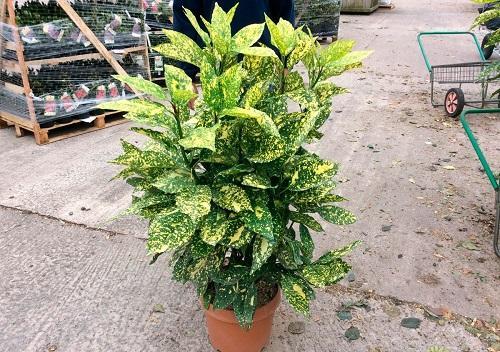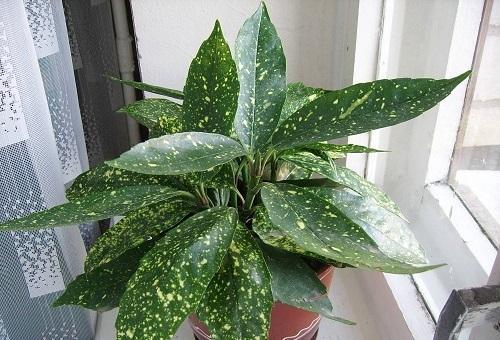Japanese Aucuba Care Basics
 Japanese aukuba is often used not only for landscaping office premises, but also in private houses and apartments. The plant earned such popularity due to its spectacular decorative effect: the lush bush is all covered with juicy green large foliage, painted with golden specks characteristic of this species.
Japanese aukuba is often used not only for landscaping office premises, but also in private houses and apartments. The plant earned such popularity due to its spectacular decorative effect: the lush bush is all covered with juicy green large foliage, painted with golden specks characteristic of this species.
Under natural conditions, the Japanese aukuba grows up to 4 m in height, but as a pot culture it rarely exceeds 2 m.
Care aucuba japanese at home does not require any special events, because in general the plant is not capricious. It is enough to create habitat conditions for it as close as possible to the natural environment at the stage of the first landing, and the aucuba will delight with its beauty for a very long time.
So what does this Japanese beauty love and what is she afraid of?
Aucuba soil
The soil for planting a bush should be loose and allow water and air to pass through well. It is easy to make it yourself, mixing deciduous and sod soil in equal proportions and adding half of the sand to them.
A drainage layer must be laid at the bottom of the pot so that the root system of the flower does not rot.
Comfortable temperature and humidity
Aucuba does not like high temperature and its sharp fluctuations. Optimum temperature values for it:
- in summer - 20 degrees;
- in winter - up to 14 degrees Celsius.
A drop in temperature below 5 degrees Celsius in winter is destructive for the aucuba.
In summer, the aucuba feels good on the street and can easily do with one watering, but during the heating season, she does not really like dry apartment air, so it is necessary to periodically spray the leaves.
Does the aucuba need bright light?
Despite the variegated color of the leaf plates, they are sensitive to bright light, so southern windows should be avoided. But diffused lighting is just what the flower needs, and even on the northern window the plant may well develop.
How to water and what to feed?
The Japanese aucuba loves moisture and needs abundant watering during the spring-summer period, but only after the topsoil in the pot has dried. In winter, the intensity of watering should be reduced, especially when the flower is cold wintering.
For feeding once a week, you can use both organic and ready-made complex preparationsalternating them.